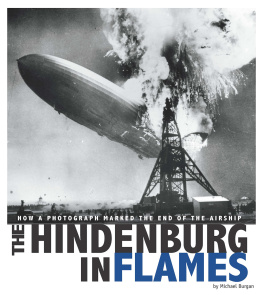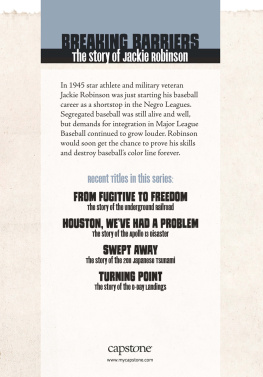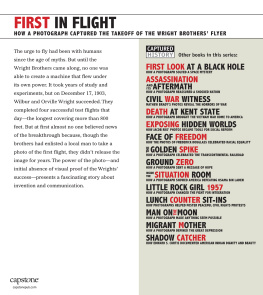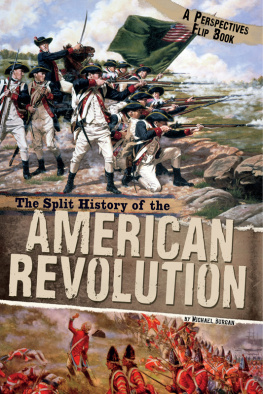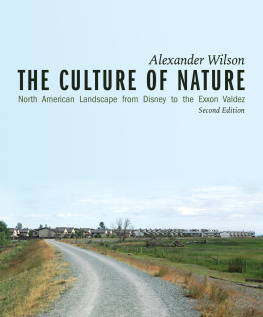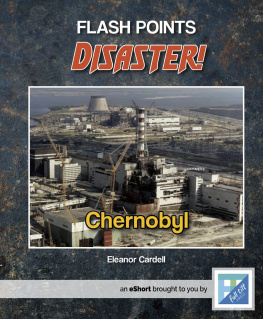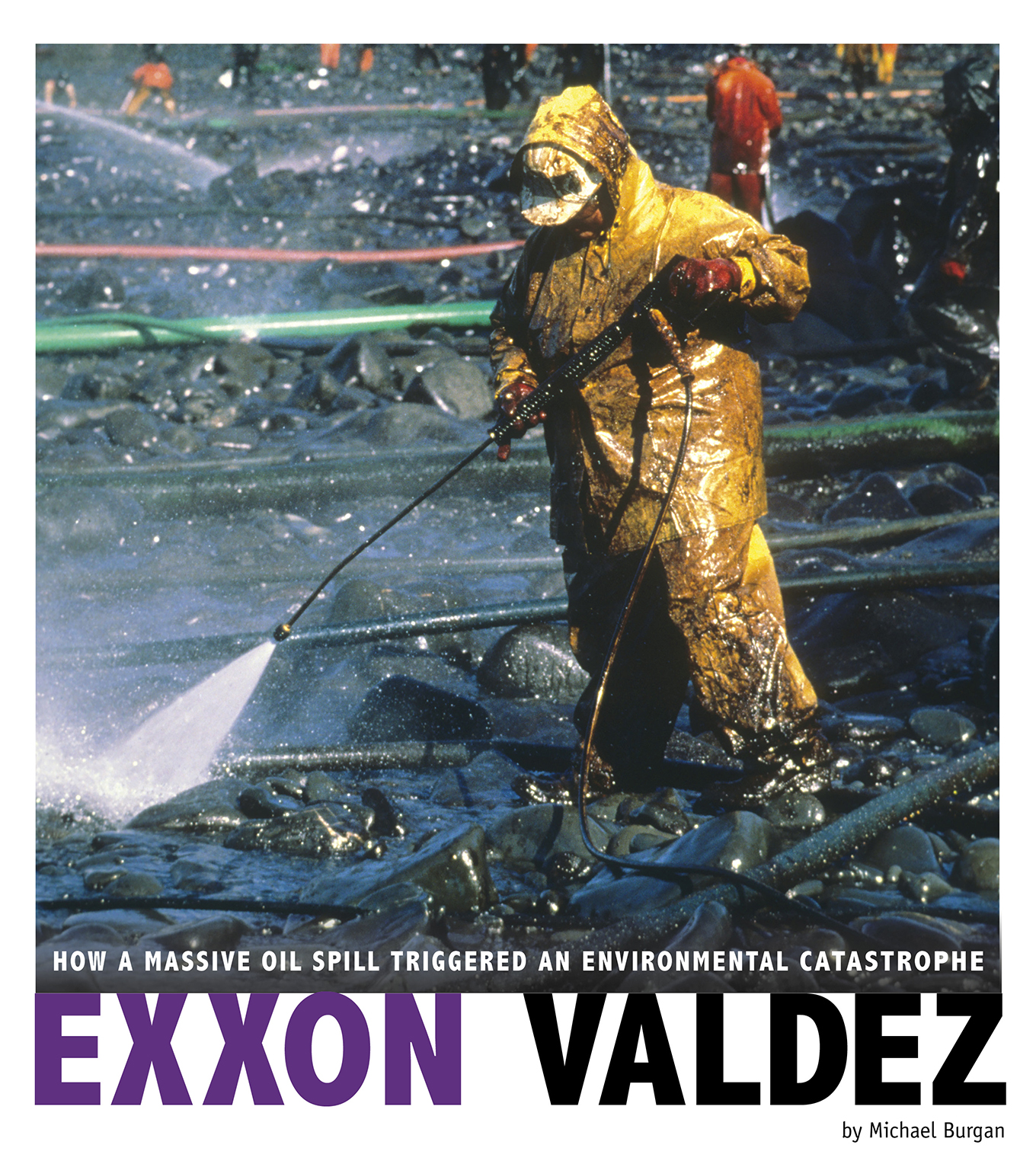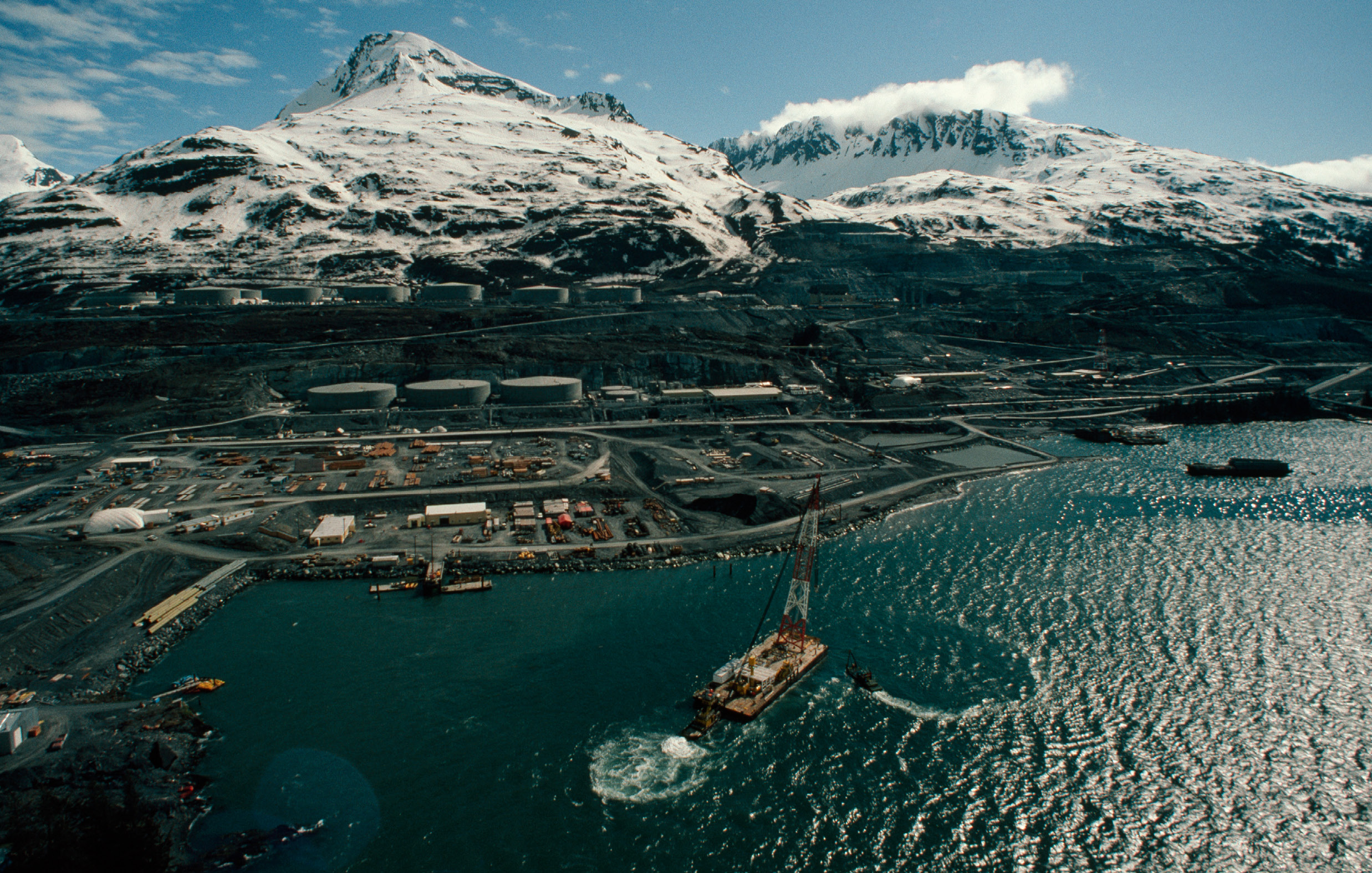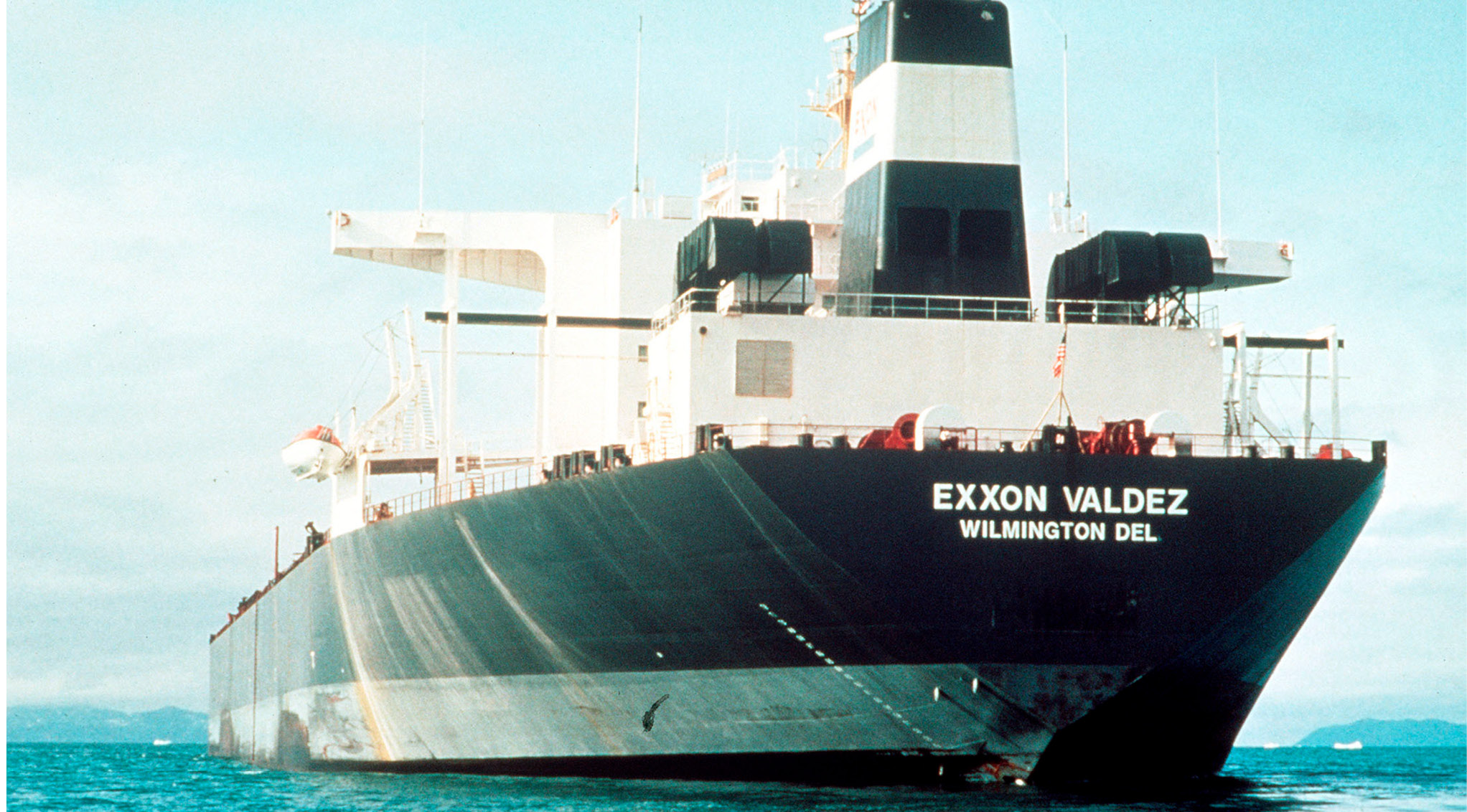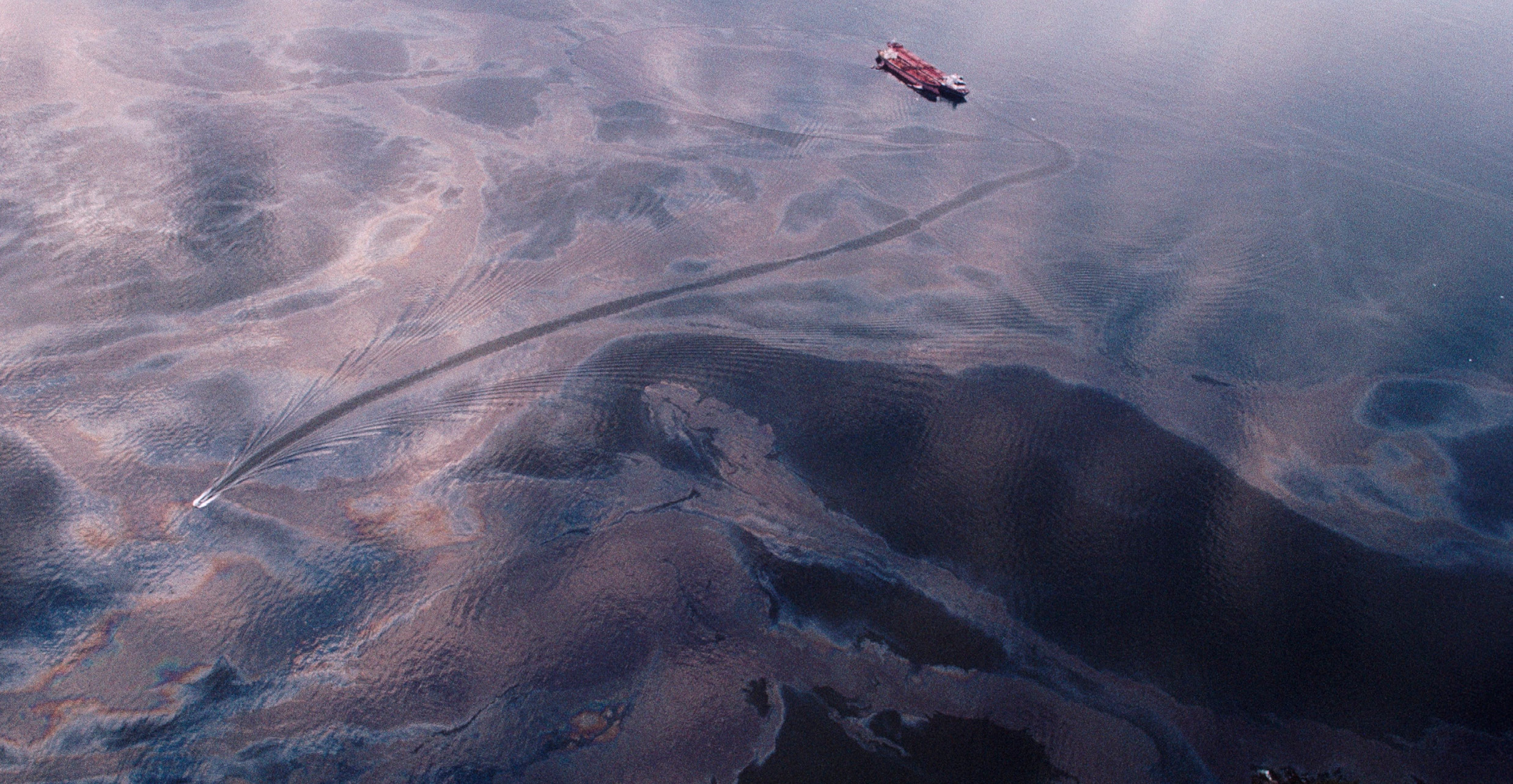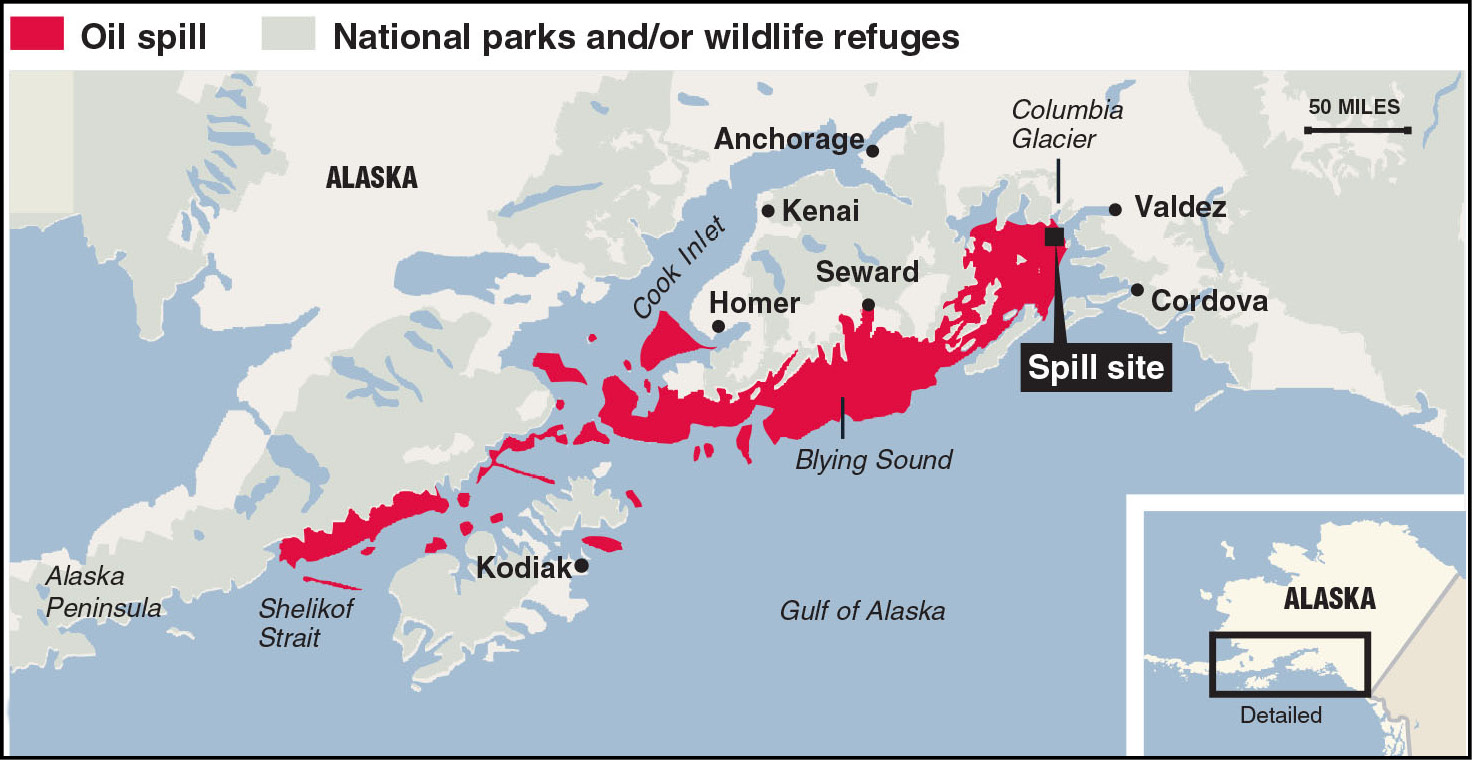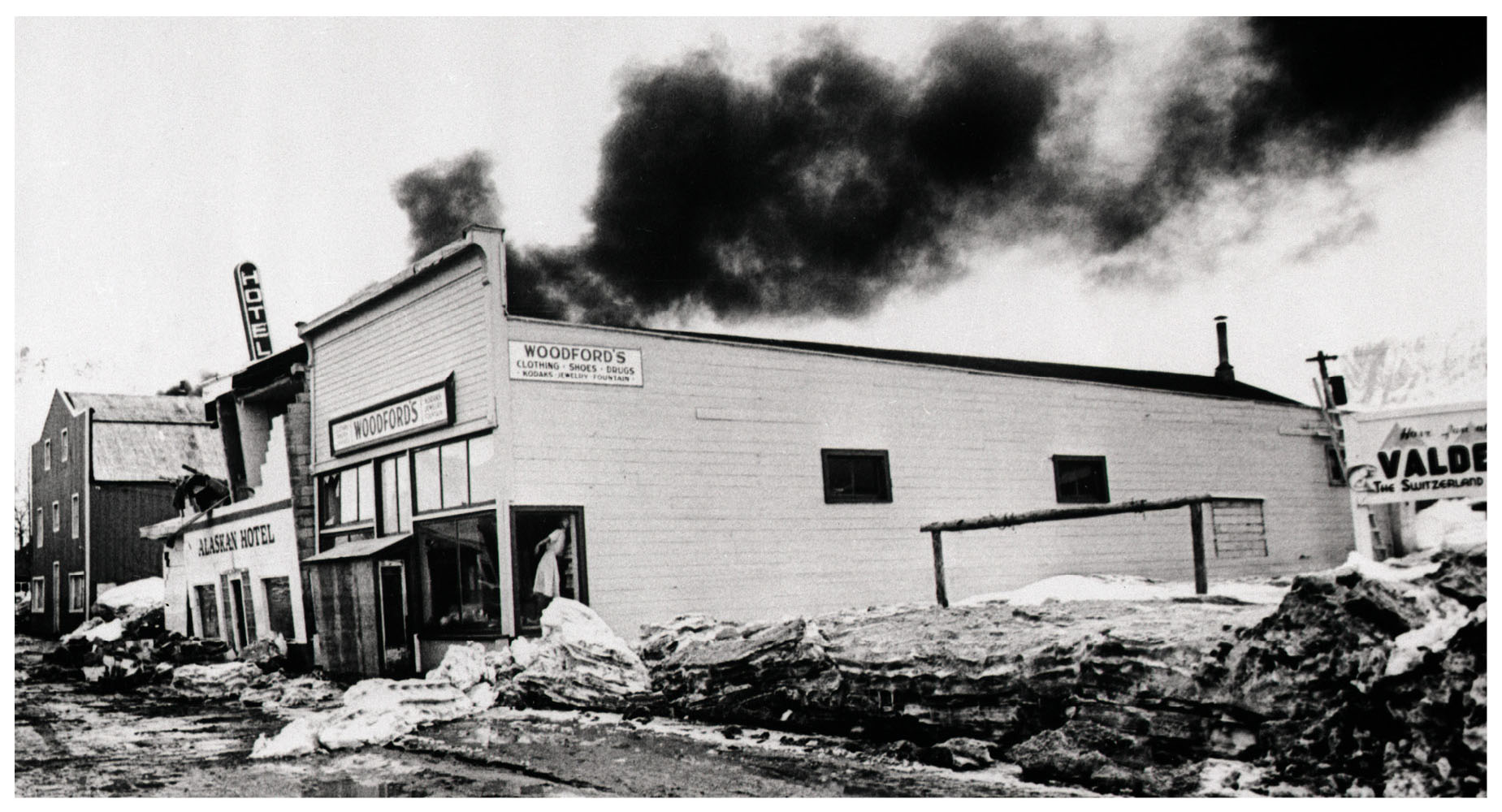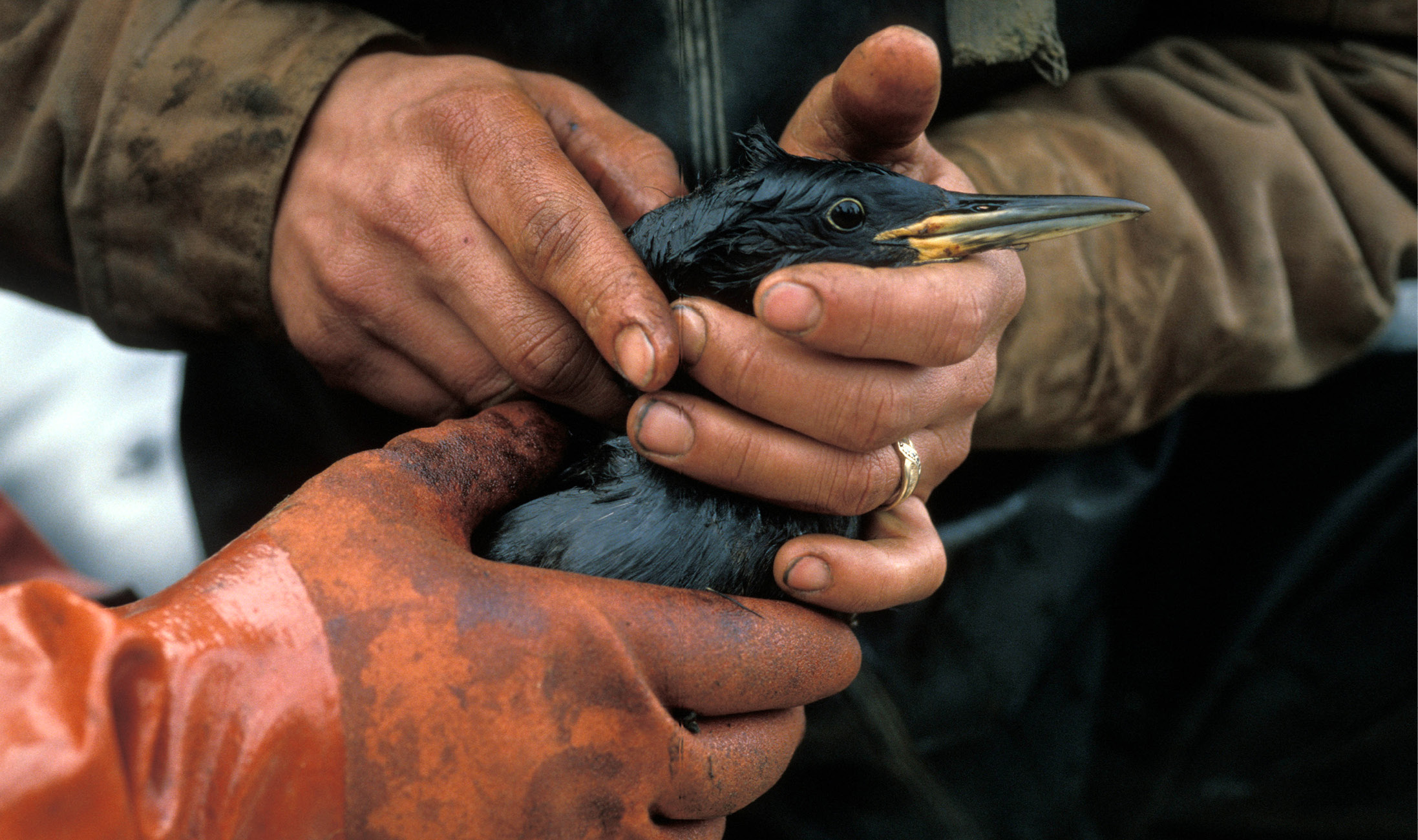Chapter One
THE BIG ONE COMES
In the small town of Valdez, Alaska, a group of about 30 residents crowded around a speakerphone in a local government office. It was Thursday evening, March 23, 1989, and the Easter weekend was about to begin. On the other end of the line was Fishing was an important part of the local economy the money fishers made selling their catch helped businesses stay open. The sound was also home to bald eagles and other birds that caught the fish for food, along with sea otters, sea lions, orcas, and other mammals. Many of these animals also relied on the fish to survive.
Another natural resource besides fish had become important to the local economy, and to Alaska as a whole. In June 1977 oil had begun flowing from Alaskas -based products.
Oil storage tanks lined the shore of the harbor in Valdez, Alaska, when oil began flowing through the Trans-Alaska Pipeline System in 1977.
Many Alaska people, had opposed the building of the pipeline and the terminal. They feared an oil spill could ruin their way of life. For the native Alaskans, that included hunting sea mammals that lived in the sound as well as catching fish. But with backing from the U.S. government, several oil companies were able to drill for the oil buried beneath the frozen Arctic land and transport it to other states.
The fear of an oil spill and pollution from the Valdez Marine Terminal had not faded in the years after TAPS opened. Ships leaving the terminal sometimes had accidents, even though a major spill hadnt occurred. Riki Ott was one of the people worried about a spill. She could not attend the meeting in Valdez on March 23 because bad weather had made it impossible to fly there from her home in the small fishing town of Cordova on Prince William Sound. No roads linked the two communities, so flying would have been the fastest way there. Instead, Ott sat by herself in a room 70 miles (113 km) away and spoke to the people at the meeting in Valdez by phone.
Ott talked about the increasing number of
As Ott spoke on the phone, a ship loaded with oil was about to leave the Valdez Marine Terminal. The Exxon Valdez was almost 1,000 feet (305 meters) long, and, as its name suggested, it was owned by Exxon, one of seven companies that operated the pipeline and terminal. The seven had formed the Alyeska Pipeline Services Company in 1970. Exxon was the largest of the companies involved and the largest U.S. oil company.
When it was delivered in 1986, the Exxon Valdez was the largest ship ever built on the U.S. West Coast.
That night at about 9:20, the Exxon Valdez slowly made its way out of the port carrying 53 million gallons (200 million liters) of fuel oil. Commanding the ship was Captain guided the tanker through a narrow waterway about 7 miles (11 km) out of the port. Hazelwood came to the bridge shortly after 11 p.m., before the pilot left the ship.
Hazelwood soon saw on radar that large chunks of ice had drifted into the path that he would normally take to reach the open sea. The ice had broken off the nearby Columbia Glacier. The captain contacted the U.S. Coast Guards Vessel Tracking Center in Valdez to explain the situation. The center followed the movement of all ships coming into and leaving Valdez. The center gave Hazelwood permission to use the sea-lane that ships normally used to enter the harbor. After a while, Hazelwood left the bridge, leaving third mate Gregory Cousins in charge of putting the ship back on its usual course once it passed the ice.
But something went wrong as the huge ship cut through the waters of Prudhoe Bay oil were now flooding into Prince William Sound.
At 12:26 a.m., Hazelwood radioed the.
Through holes in its smashed steel hull, the tanker Exxon Valdez spilled millions of gallons of oil into Prince William Sound.
News of the crash and oil spill spread to all the organizations responsible for preventing such a spill and cleaning one up if one did occur. Along with the Coast Guard, other U.S officials soon knew about the situation at Bligh Reef. So did environmental agencies in Alaska and officials at the pipeline company and at Exxons headquarters in Houston, Texas.
The spilled oil damaged more than 1,000 miles (1,600 km) of shoreline.
Around 3 a.m. two Coast Guard officers and Dan Lawn of the Alaska Department of Environmental Conservation (DEC) headed out to Bligh Reef. Even before reaching the ship, Lawn could smell the strong, foul odor of the oil. Nearing the Exxon Valdez, Lawn saw oil bubbling on the waters surface. Like Ott and other Alaskans who lived in and near Valdez, he had feared that a major oil spill would one day threaten the environment around Prince William Sound. Now it seemed to have happened. But he didnt know what Exxon officials in Houston did. Thanks to computer reports sent directly from the ship, the company realized it was facing the worst oil spill in U.S. history.
While Lawn didnt know the full extent of the spill, he knew that Coast Guard feared that the Exxon Valdez could break apart, releasing more oil into the water.
ANOTHER GOOD FRIDAY DISASTER
Some longtime residents of Valdez woke up on March 24, 1989, and thought back to another tragedy that took place on a Good Friday. Twenty-five years earlier, Good Friday had fallen on March 27. Around 5:30 p.m. that day in 1964, an earthquake centered about 50 miles (80 km) west of Valdez shook the region. On the Richter scale, which was used to measure the strength of earthquakes, the quake registered 9.2 the second most powerful ever recorded anywhere in the world. In some places, buildings shook for more than four minutes.
The effects of the quake were felt across the United States, where it stirred up water in lakes and rivers in almost every state. The earthquake and a fishers could no longer work in those waters.
A tsunami destroyed Valdezs waterfront and a fire swept through the city in March 1964.
At the Alyeska he said later. And we waited, and we waited, and we waited, and we waited.
The first ship to reach the Exxon Valdez, carrying
Rescuers held a cormorant covered in oil. Hundreds of thousands of birds were affected by the massive oil spill.
Reporters began to head to Valdez. TV news crews and photographers from around the world also wanted to document the worsening disaster in Prince William Sound. The containment equipment that first reached the site could not stop the spilled oil from spreading, and then bad weather added to the problem. Eventually more than 1,000 miles (1,600 km) of Alaska coastline would be polluted by the oil. Photographs sent from the scene showed dead birds covered with oil and rescue workers trying to clean the oil off animals and rocks on the shore. Those images helped the world understand how the oil spill affected wildlife and people in ways that are still felt today.


